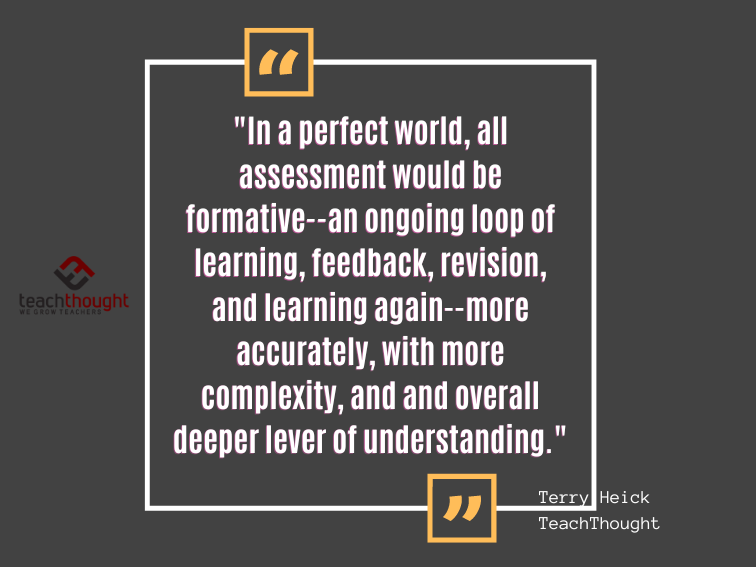by Terry Heick
Assessment: Of Learning vs. For Learning
Assessment is often discussed as though it were a single act—a quiz, test, or score.
Its value depends on purpose. If you’re wondering what the purpose of assessment is, that answer should drive how you design it, use it, and respond to it.
Think like a doctor: Before you design an assessment, have a plan for how you’ll use the results. Data without a purpose wastes time, energy, and resources—both yours and your students’.
Assessment For vs. Of Learning
Assessment for learning (What Is Formative Assessment?) is designed to inform instruction. The goal isn’t to sort or label students, but to generate feedback teachers can use to revise lessons, activities, or pacing. In this sense, its function is diagnostic: it helps decide what to do next.
Assessment of learning (commonly called summative assessment) measures what students have learned after instruction. The purpose is accountability—demonstrating achievement against standards, benchmarks, or objectives. These assessments are usually graded and reported, often with higher stakes.
The same tool can serve either function. A quiz might be used as a quick check to guide tomorrow’s lesson (for learning) or as an end-of-unit measure of mastery (of learning). The difference is in how the results are used.
Before, During, and After Instruction
Assessment is commonly grouped by timing:
- Pre-assessment: Before instruction, to identify prior knowledge and guide planning.
- Formative assessment: During instruction, to provide ongoing feedback and inform next steps.
- Summative assessment: After instruction, to measure achievement or proficiency.
Pre-assessments often blur categories. They reveal what students already know (of learning) and also provide information to adapt instruction (for learning).
The Purpose Question
The key question is: What is the assessment supposed to do?
If the aim is to show what students can do, it’s of learning. If the aim is to decide what teachers should do next, it’s for learning.
The distinction is less about labels and more about use. The value isn’t the score itself, but the instructional decisions it enables. For criteria that improve quality, see The Characteristics Of A Good Assessment.
Research
Black, P., & Wiliam, D. (1998). Inside the black box: Raising standards through classroom assessment. Phi Delta Kappan, 80(2), 139–148.

